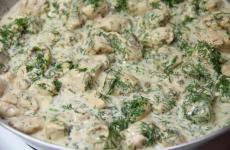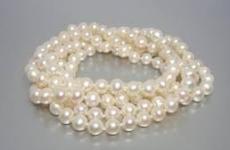Climatic design placement category. Climate modification categories: UHL1, U1, UHL2, U2, UHL3, U3, UHL4, U4
Climatic design refers to the types of climatic design of machines, instruments, equipment and other technical elements and products.
In Russia, climatic design is defined in GOST 15150-69, which sounds like “Machines, instruments and other technical products. Versions for different climatic regions. Categories, operating, storage and transportation conditions regarding the impact of environmental climatic factors.”
Most often, the climatic version is indicated in the name of technical equipment or machines in the last characters, for example, fire arrester OP-50 UHL, or steel valve 30s41nzh Du50 Ru16 U, etc.
As a result, today we can distinguish the following categories of climate control:
Category No. 1 - on outdoors(for outdoor installation);
Category No. 2 - under a canopy or indoors, where fluctuations in parameters such as temperature and humidity differ little from fluctuations in the open air and there is relatively free access to outside air (in tents, trailers, metal rooms without additional thermal insulation) .
Category No. 3 - in enclosed spaces with natural ventilation without artificial regulation of climatic conditions (in brick or concrete, in metal rooms with thermal insulation).
Category No. 4 - in rooms with artificially controlled climatic conditions (heated or cooled and ventilated).
Category No. 5 - in rooms with high humidity (for example, in unheated and unventilated underground rooms).
The combination of climatic design and placement category is called the type of climatic design (for example, UZ, HL1, etc.). Symbols indicating the type of climatic modification are included in the designation of the product type (for example, Valve KDM-50M U1, or ball valve KSHTSF-80 HL1).
|
Climatic versions of products |
Designations |
|
|
alphabetic |
digital |
|
|
Products intended for use on land, rivers, lakes |
||
|
For a macroclimatic region with a temperate climate |
||
|
For macroclimatic regions with temperate and cold climates |
||
|
For a macroclimatic region with a humid tropical climate |
||
|
For a macroclimatic region with a dry tropical climate |
||
|
For macroclimatic regions with both dry and humid tropical climates |
||
|
For all macroclimatic regions on land, except for the macroclimatic region with a very cold climate (general climatic version) |
||
|
Products intended for use in macroclimatic areas with a maritime climate |
||
|
For a macroclimatic region with a moderately cold maritime climate |
||
|
For a macroclimatic area with a tropical maritime climate, including for coastal navigation vessels or others intended for navigation only in this area |
||
|
For macroclimatic areas with both moderately cold and tropical maritime climates, including for ships of unlimited navigation area |
||
|
Products intended for use in all macroclimatic regions on land and at sea, except for macroclimatic regions with very cold climates (all-climatic design) |
||
|
According to GOST 16350, products in the U and UHL versions can be used in warm humid, hot dry and very hot dry climatic regions in which the average annual absolute maximum air temperature is above 40°C and (or) a combination of temperatures equal to or above 20°C , and relative humidity equal to or higher than 80%, observed for more than 12 hours per day for a continuous period of more than two months a year. |
||
Depending on the design for different climatic regions, categories and operating conditions, as well as storage conditions in terms of exposure to external climatic factors, products are labeled in accordance with GOST 1 51 50-69. Marking according to GOST 14254-96 indicates the degree of protection provided by the shells.
Marking U1: products intended for use in temperate climates outdoors (placement category 1).
Marking U2: products for use in temperate climates under a canopy or in rooms with free access of air (location category 2).
UZ marking: products for use in temperate climates in enclosed spaces with natural ventilation (location category 3).
Marking T1.T2.TZ: products for use in both dry and humid tropical climates, placed outdoors, under a canopy, in enclosed spaces with natural ventilation.
Marking UHL1: products for use in temperate and cold climates outdoors (placement category 1).
Marking UHL-4: products for use in temperate and cold climates in rooms with artificially controlled climatic conditions (location category 4).
Marking UT1.5: products for use in both temperate and dry or humid tropical climates, both outdoors (placement category 1) and in rooms with high humidity (placement category 5).
In temperate and cold climates, special requirements are placed on the material of products due to the low operating temperature. Thus, those products that are intended for use in areas of the UHL1 category must be made of materials that are capable of maintaining properties at -70 degrees Celsius.
Marking with the index “ts” means that the product has received a zinc coating through the hot-dip galvanizing procedure. The index “x” marks products with a chemical-resistant coating. Important: products manufactured for use in an area of location category 1 can be used in areas of categories 2, 3 and 4, however, the opposite is not true. Also, products marked UT1.5 can be used to replace products marked U1, U2, U3, T1, T2, T3.
The following types of protective coatings are applied according to the manufacturing technology of products at the factory:
- Paint and varnish, including chemical-resistant paint and varnish coating
- Galvanic galvanizing
- Hot-dip galvanizing by immersion in molten zinc
As a workpiece, the use of thin sheet steel that has been hot-dip galvanized using the Sendzimir method in continuous galvanizing units is widespread.
The degree of protection is indicated by the letters “IP” followed by two numbers. The first digit encodes the degree of protection of the product from the ingress of solid foreign bodies, and the second - the degree of protection from the ingress of water.
GOST 15150-69 applies to all types of machines, instruments and other technical products and establishes the macroclimatic zoning of the globe, designs, categories, operating conditions, storage and transportation of products in terms of the impact of environmental climatic factors
Types of climatic versions, designation
- U - temperate climate (+40/-45 o C);
- HL - cold climate (+40/-60 o C);
- UHL - moderate and cold climate (+40/-60 o C);
- T - tropical climate (+40/+1 o C);
- M - maritime moderate-cold climate (+40/-40 o C);
- O - general climatic version (except for sea) (+50/-60 o C);
- OM - general climatic marine version (+45/-40 o C);
- B - all climatic versions (+50/-60 o C).
Climatic conditions in Central Antarctica are not determined by GOST 15150-69. Several macroclimatic regions can be combined into a group of macroclimatic regions (for example, climate category UHL, T).
Example notation:
KSO 200-16-160 UHL 1.This means that a bellows expansion joint with a nominal diameter of 200 mm, a working pressure of 16 bar and a compensating capacity of 160 mm is used in moderately cold climates at temperatures down to minus 60 o C in the open air.
The number after the letters indicates the placement category:
- 1 - open air;
- 2 - the same as 1 only without direct sunlight and without precipitation;
- 3 - indoors without climate control;
- 4 - indoors with ventilation and heating;
- 5 - in rooms with high humidity, without artificial regulation of climatic conditions.
General provisions of GOST 15150-69
- GOST 15150-69 must be used in the design and manufacture of products in accordance with the climatic modifications reflected in it. In particular, it should be used when drawing up technical specifications for the development or modernization of products, as well as when developing state standards and technical specifications that establish requirements regarding the impact of climatic environmental factors for a group of products, and in the absence of these group documents - for individual types of products . All products must be manufactured in accordance with climatic modifications in accordance with GOST 15150-69
- Products must maintain their parameters within the limits established by technical specifications, standards or specifications during the service life and shelf life specified in the technical specifications, standards or technical conditions, after and (or) during exposure to climatic factors, the values of which are established by this standard, i.e. must comply with climatic modifications in accordance with GOST 15150-69.
- Products are intended for operation, storage and transportation in the range from the upper to the lower values of these climatic modifications, while in addition to the ranges of climatic factors within which the operation of the products is ensured during operation, one or more narrower ranges of climatic factors can be established, within which provide a narrower range of parameter deviations (for example, higher control or measurement accuracy), i.e. climatic design must correspond to the category according to GOST 15150-69.
- For specific types or groups of products, the types of influencing climatic factors influencing the climatic design according to GOST and their nominal values are established depending on the operating conditions of the products in the relevant technical specifications, standards and technical conditions. If there are documents that establish for product groups a connection between the values of factors with the specified climatic modifications in accordance with GOST 15150-69, you should be guided by the instructions of these documents
- It is allowed to operate products in macroclimatic areas other than those for which the products are intended, if climatic factors during operation do not exceed the limits of the nominal values established for these products. For example, products of the UHL4 climatic version can be operated in UHL2 conditions during the dry summer period.
- It is allowed to operate products in conditions where the values of climatic factors go beyond the established nominal values, if deviations in service life are acceptable. In this case, the permissibility of operation, the values of climatic factors for designs, and permissible deviations in service life are agreed upon with the product supplier.
- In accordance with economic and technical feasibility, it is recommended to manufacture products suitable for use in several regions established by this standard, that is, the climatic category according to GOST 15150-69 should cover several climatic regions.
- Products can also be designed for use in several macroclimatic regions; in these cases, combinations of various operating or storage conditions with periods of stay in these conditions are established in standards or technical specifications for products; climatic modifications (climatic modification category) must be indicated in the accompanying documents for the product.
- The macroclimatic region with a temperate climate UHL (climate category UHL) includes areas where the average annual absolute maximum air temperature is equal to or below plus 40°C, and the average annual absolute minimum air temperature is equal to or above minus 45°C.
- D descends from the macroclimatic region with a temperate climate to identify a macroclimatic subregion with a warm temperate subtype of macroclimate, for which the average of the annual absolute minimum air temperatures is equal to or higher than minus 25 ° C.
- The macroclimatic region with a cold climate HL (climatic category HL) includes areas in which the average annual absolute minimum air temperature is below minus 45°C. The cold climate region UHL (climate category UHL) is indicated on the map.
By agreement with the customer, it is allowed to supply products designed for a temperate climate U1 to areas within 50 km from the southwestern and southeastern boundaries of the macroclimatic region with a cold climate on the territory of the Russian Federation
Federation.
Products placed on mobile units intended for deliveries to the coastal area of the Okhotsk (north of the mouth of the Uda River) and Bering Seas (with the exception of the Kamchatka Peninsula) must be manufactured in the HL design.
Temperature values according to climatic version
|
Product execution |
Air temperature during operation, °C |
||||
|
Limit working |
|||||
|
1; 1.1; 2; 2.1; 3 |
|||||
|
1; 1.1; 2; 2.1; 3 |
|||||
|
1; 1.1; 2; 2.1; 3 |
|||||
|
1; 1.1; 2; 2.1; 3; 3.1 |
|||||
|
1; 1.1; 2; 2.1; 3; 3.1 |
|||||
|
1; 1.1; 2; 2.1; 3; 5; 5.1 |
|||||
|
1; 1.1; 2; 2.1; 3; 5; 5.1 |
|||||
|
1; 1.1; 2; 2.1; 3; 5; 5.1 |
|||||
|
1; 1.1; 2; 2.1; 3 |
|||||
PERSONAL DATA POLICY
Personal Information
This Personal Data Privacy Policy (hereinafter referred to as the Privacy Policy) applies to all information that TDNP LLC, located on the domain name https://www.site, can receive about the User while using the site.
- DEFINITION OF TERMS
- 1.1. The following terms are used in this Privacy Policy:
- 1.1.1. “Site Administration” - authorized employees to manage the site, acting on behalf of TDNP LLC, who organize and (or) process personal data, and also determine the purposes of processing personal data, the composition of personal data to be processed, actions (operations), performed with personal data.
- 1.1.2. “Personal data” - any information relating to directly or indirectly determined or determined to an individual(to the subject of personal data).
- 1.1.3. “Processing of personal data” - any action (operation) or set of actions (operations) performed using automation tools or without the use of such means with personal data, including collection, recording, systematization, accumulation, storage, clarification (updating, changing), extraction, use, transfer (distribution, provision, access), depersonalization, blocking, deletion, destruction of personal data.
- 1.1.4. “Confidentiality of personal data” is a mandatory requirement for the Operator or other person who has access to personal data to not allow their distribution without the consent of the subject of personal data or the presence of another legal basis.
- 1.1.5. “Site User (hereinafter referred to as the User)” is a person who has access to the Site via the Internet and uses the Site.
- GENERAL PROVISIONS
- 2.1. The User's use of the site constitutes agreement with this Privacy Policy and the terms of processing of the User's personal data.
- 2.2. In case of disagreement with the terms of the Privacy Policy, the User must stop using the site.
- 2.3. This Privacy Policy applies only to the website.
- 2.4. The site administration does not verify the accuracy of the personal data provided by the site user.
- SUBJECT OF THE PRIVACY POLICY
- 3.1. This Privacy Policy establishes the obligations of the Site Administration to non-disclose and ensure a regime for protecting the confidentiality of personal data that the User provides at the request of the Site Administration when registering on the site.
- 3.2. Personal data permitted for processing under this Privacy Policy is provided by the User by filling out the registration form on the Site and includes the following information:
- 3.2.1. Username;
- 3.2.2. name of the User's company;
- 3.2.3. address Email(e-mail);
- 3.2.4. user message;
4. PURPOSES OF COLLECTING USER’S PERSONAL INFORMATION
The Site Administration may use the User’s personal data to establish feedback with the User, including sending notifications, requests regarding the use of the Site, the provision of services, processing requests and applications from the User.
5. METHODS AND TERMS OF PROCESSING PERSONAL INFORMATION
- 5.1. The processing of the User’s personal data is carried out without a time limit, in any legal way, including information systems personal data using automation tools or without the use of such tools.
- 5.2. The User's personal data may be transferred to authorized bodies state power Russian Federation only on the grounds and in the manner established by the legislation of the Russian Federation.
- 5.3. In case of loss or disclosure of personal data, the Site Administration informs the User about the loss or disclosure of personal data.
- 5.4. The site administration takes the necessary organizational and technical measures to protect the User’s personal information from unauthorized or accidental access, destruction, modification, blocking, copying, distribution, as well as from other unlawful actions of third parties.
6. OBLIGATIONS OF THE PARTIES
- 6.1. The user is obliged:
- 6.1.1. Provide information about personal data necessary to use the Site.
- 6.2. The site administration is obliged to:
- 6.2.1. Use the information received solely for the purposes specified in clause 4 of this Privacy Policy.
- 6.2.2. Ensure that confidential information is kept secret, not disclosed without the prior written permission of the User, and also not sell, exchange, publish, or disclose in other possible ways the transferred personal data of the User, with the exception of clause 5.2. of this Privacy Policy.
- 6.2.3. Take precautions to protect the confidentiality of the User's personal data in accordance with the procedure usually used to protect this type of information in existing business transactions.
- 6.2.4. Block personal data relating to the relevant User from the moment of application or request from the User or his legal representative or the authorized body for the protection of the rights of personal data subjects for the period of verification, in the event of detection of unreliable personal data or unlawful actions.
7. CHANGES TO THE PRIVACY POLICY. APPLICABLE LAW
- 7.1. The site administration has the right to make changes to this Privacy Policy. When changes are made to the current edition, the date is indicated latest update. The new version of the Policy comes into force from the moment it is posted, unless otherwise provided by the new version of the Policy.
- 7.2. The current edition is constantly available on the website https://www.site
- 7.2. This Policy and the relationship between the User and the Site Administration arising in connection with the application of the Privacy Policy are subject to the law of the Russian Federation.
8. RESPONSIBILITY OF THE PARTIES
Under any circumstances, the liability of the Site Administration in accordance with Article 15 of the Civil Code of Russia is limited to 10,000 (ten thousand) rubles of the Russian Federation and is assigned to it if there is guilt in its actions.
9. FEEDBACK. QUESTIONS AND SUGGESTIONS
- 9.1. The User has the right to send all suggestions or questions regarding this Privacy Policy to the following address: 192283, St. Petersburg, Oleko Dundich St., 10, building 1, apt. 105
GOST 15150-69 applies to all types of machines, instruments and other technical products and establishes the macroclimatic zoning of the globe, designs, categories, operating conditions, storage and transportation of products in terms of the impact of environmental climatic factors
Types of climatic versions, designation
- U - moderate climate (+40/-45 °C);
- HL - cold climate (+40/-60 °C);
- UHL - moderate and cold climate (+40/-60 °C);
- T - tropical climate (+40/+1 °C);
- M - maritime moderate-cold climate (+40/-40 °C);
- О - general climatic version (except sea) (+50/-60 оС);
- OM - general climatic marine version (+45/-40 оС);
- B - all climatic versions (+50/-60 оС).
Climatic conditions in Central Antarctica are not determined by GOST 15150-69. Several macroclimatic regions can be combined into a group of macroclimatic regions (for example, climate category UHL, T).
Example notation:
Bellows compensator KSO 200-16-160 UHL 1.
This means that a bellows expansion joint with a nominal diameter of 200 mm, a working pressure of 16 bar and a compensating capacity of 160 mm is used in moderately cold climates at temperatures up to minus 60 ° C in the open air.
The number after the letters indicates the placement category:
- 1 - open air;
- 2 - the same as 1 only without direct sunlight and without precipitation;
- 3 - indoors without climate control;
- 4 - indoors with ventilation and heating;
- 5 - in rooms with high humidity, without artificial regulation of climatic conditions.
General provisions of GOST 15150-69
- GOST 15150-69 must be used in the design and manufacture of products in accordance with the climatic modifications reflected in it. In particular, it should be used when drawing up technical specifications for the development or modernization of products, as well as when developing state standards and technical specifications that establish requirements regarding the impact of climatic environmental factors for a group of products, and in the absence of these group documents - for individual types of products . All products must be manufactured in accordance with climatic modifications in accordance with GOST 15150-69
- Products must maintain their parameters within the limits established by technical specifications, standards or technical conditions during the service life and shelf life specified in the technical specifications, standards or technical conditions, after and (or) during exposure to climatic factors, the values of which are established hereby standard i.e. must comply with climatic modifications in accordance with GOST 15150-69.
- Products are intended for operation, storage and transportation in the range from the upper to the lower values of these climatic modifications, while in addition to the ranges of climatic factors within which the operation of the products is ensured during operation, one or more narrower ranges of climatic factors can be established, within which provide a narrower range of parameter deviations (for example, higher control or measurement accuracy), i.e. climatic design must correspond to the category according to GOST 15150-69.
- For specific types or groups of products, the types of influencing climatic factors influencing the climatic design according to GOST and their nominal values are established depending on the operating conditions of the products in the relevant technical specifications, standards and technical conditions. If there are documents that establish for product groups a connection between the values of factors with the specified climatic modifications in accordance with GOST 15150-69, you should be guided by the instructions of these documents
- It is allowed to operate products in macroclimatic areas other than those for which the products are intended, if climatic factors during operation do not exceed the limits of the nominal values established for these products. For example, products of the UHL4 climatic version can be operated in UHL2 conditions during the dry summer period.
- It is allowed to operate products in conditions where the values of climatic factors go beyond the established nominal values, if deviations in service life are acceptable. In this case, the permissibility of operation, the values of climatic factors for designs, and permissible deviations in service life are agreed upon with the product supplier.
- In accordance with economic and technical feasibility, it is recommended to manufacture products suitable for use in several regions established by this standard, that is, the climatic category according to GOST 15150-69 should cover several climatic regions.
- Products can also be designed for use in several macroclimatic regions; in these cases, combinations of various operating or storage conditions with periods of stay in these conditions are established in standards or technical specifications for products; climatic modifications (climatic modification category) must be indicated in the accompanying documents for the product.
- The macroclimatic region with a temperate climate UHL (climate category UHL) includes areas where the average annual absolute maximum air temperature is equal to or below plus 40°C, and the average annual absolute minimum air temperature is equal to or above minus 45°C.
- It is allowed to distinguish from a macroclimatic region with a temperate climate a macroclimatic subregion with a warm moderate subtype of macroclimate, for which the average annual absolute minimum air temperature is equal to or higher than minus 25 °C.
- The macroclimatic region with a cold climate HL (climatic category HL) includes areas in which the average annual absolute minimum air temperature is below minus 45°C. The cold climate region UHL (climate category UHL) is indicated on the map.
By agreement with the customer, it is allowed to supply products designed for a temperate climate U1 to areas within 50 km from the southwestern and southeastern boundaries of the macroclimatic region with a cold climate on the territory of the Russian Federation
Federation.
Products placed on mobile units intended for deliveries to the coastal area of the Okhotsk (north of the mouth of the Uda River) and Bering Seas (with the exception of the Kamchatka Peninsula) must be manufactured in the HL design.
Temperature values according to climatic version
Product execution | Air temperature during operation, °C |
||||
Limit working |
|||||
1; 1.1; 2; 2.1; 3 | |||||
1; 1.1; 2; 2.1; 3 | |||||
1; 1.1; 2; 2.1; 3 | |||||
1; 1.1; 2; 2.1; 3; 3.1 | |||||
1; 1.1; 2; 2.1; 3; 3.1 | |||||
1; 1.1; 2; 2.1; 3; 5; 5.1 | |||||
1; 1.1; 2; 2.1; 3; 5; 5.1 | |||||
1; 1.1; 2; 2.1; 3; 5; 5.1 | |||||
1; 1.1; 2; 2.1; 3 | |||||






